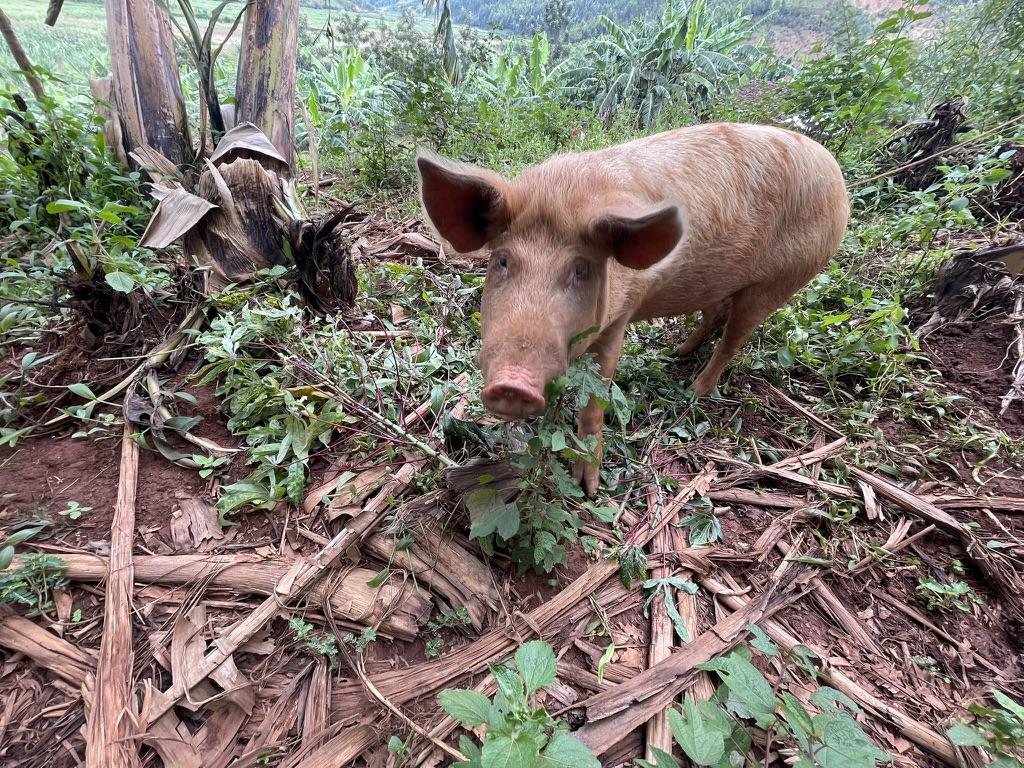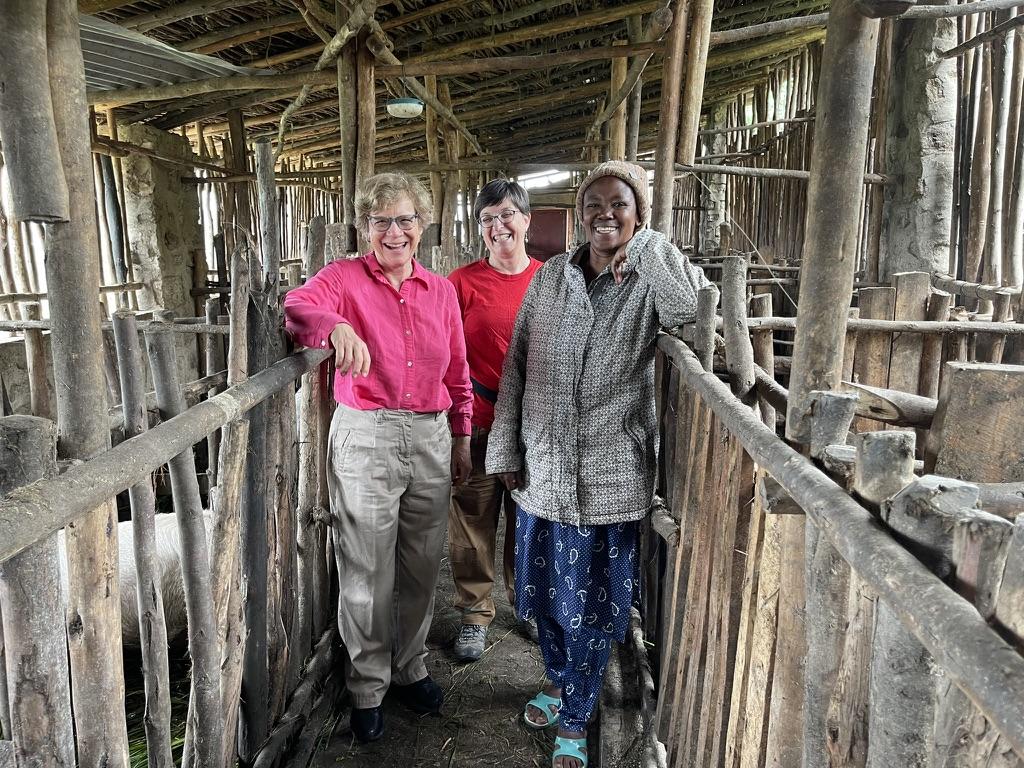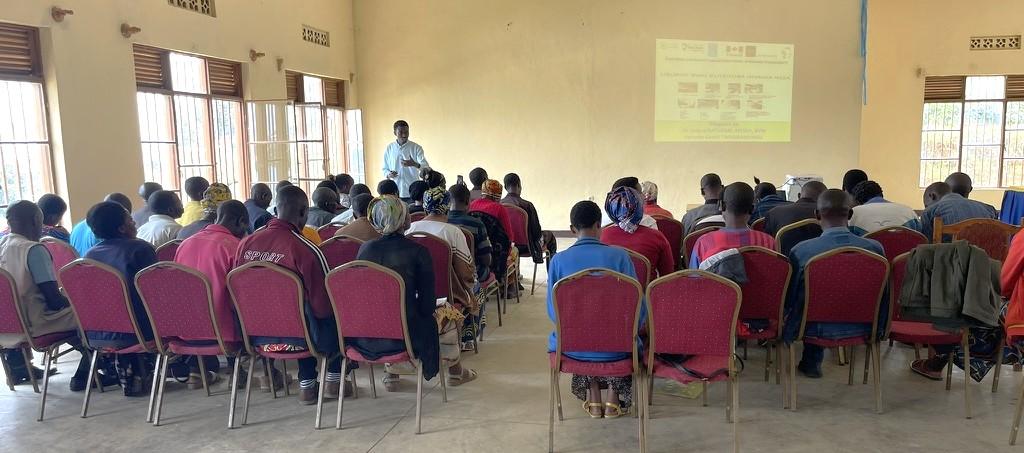
One Health in Action: OVC Faculty Improve Lives in Rural Rwanda
Researchers at Ontario Veterinary College (OVC) at the University of Guelph (U of G) are offering their expertise to help safeguard women and girls in Rwanda’s rural communities by limiting the spread of zoonotic disease.
Tackling Taenia solium
Taenia solium infection, known as the ‘pork tapeworm’ that affects humans who have consumed contaminated pork, causes 30 per cent to 70 per cent of the cases of epilepsy where people live in poverty, raise pigs and lack access to water and latrines.
OVC Experts Leading Change
Dr. Cate Dewey – founding director of the U of G’s One Health Institute – and Dr. Anne Deckert, both professors in the Department of Population Medicine are empowering Rwanda’s rural communities – especially women and girls – to prevent, detect and respond to zoonoses. The project, led by Veterinarians Without Borders and funded by Global Affairs Canada, is using a One Health approach. One Health aims to balance and optimize the health of people, animals and ecosystems by recognizing that the health of humans, domestic and wild animals and the wider environment are closely linked and interdependent.

Why Rural Rwanda?
In many of southern Rwanda’s rural communities, pigs are raised to provide income for families living in poverty. Since these communities do not have latrines, the free-roaming swine often consume human feces on the ground. As many people have the Taenia solium tapeworm, they will shed thousands of eggs each day in their stool, and when consumed by pigs, the eggs migrate to the muscle and develop into a larva. If a person eats undercooked pork from that pig, they will develop a tapeworm. If a human inadvertently eats a microscopic egg, the egg migrates to the brain and develops into a larva, which causes epilepsy. Prevention tactics include adding latrines for defecation, practicing hand washing hygiene, and confining and feeding pigs.
“The crux of the problem is that villagers have a poor understanding of the T. solium life cycle and therefore a poor understanding of the profound negative consequences that the parasite can have on its most vulnerable community members, especially those living in extreme poverty,” said Dewey.
“Unfortunately, women and girls are at risk because they are responsible for cooking, growing food and cleaning the compound.”
Building Community Capacity
The goal of the project is to create community One Health Teams (OHTs) in each of 85 villages selected in Rwanda’s Southern Province. This region was chosen because it is home to large numbers of individuals or families raising pigs, and a high prevalence of T. solium. The 3-member OHTs include a community hygiene officer, a community animal health worker and a community health worker. These are volunteer positions. Community hygiene officers provide community training on safe water, hand washing, building and using latrines and maintaining a clean environment. Animal health workers are often successful livestock farmers and refer problems to a government veterinarian. Community health workers focus on public health and disease detection, referring people to the nearest clinic.
One Health: Training the Trainers
Drs. Dewey and Deckert visited Rwanda’s pig farms, pig sales yards and butcher shops. They created a training manual and provided a three-day workshop for a Rwandan team that included the OHT community trainers – a veterinarian with expertise in farmer training and a public health specialist with community teaching experience. Over the following year, Dewey and Deckert created interactive presentations for the trainers to use for 10 monthly modules.
“We needed to develop training that incorporated a diverse suite of topics on the One Health spectrum,” said Dewey. “What is One Health? What is zoonotic disease? What is hygiene, food safety, proper pig management, and how to prevent getting the tapeworm epilepsy due to T. solium. Plus, we needed to train them on confidentiality, privacy and the process of referral.”

Dewey used case studies and presentations translated into Kinyarwanda – the official national language – to train 250 community partners each month. Pre- and post-training surveys assessed knowledge acquisition and understanding, and an enumerator was hired to convert the survey results into English. Each month, the OHTs updated the team on their progress.
Creativity was an important part of community learning, too. The OHTs created dances, stories, and poems to describe what One Health meant to them. They also created a skit about preventing T. solium to share with their communities. The final activity is to distribute an illustrated booklet to the OHTs to remind them of what they learned and to encourage them to continue to teach the members of their villages.
Embracing the One Health concept, one community member put it aptly: “It is a combined health, interconnected without harming one another. It means preserving the environment's health, air, wild animals' health, people's and domestic animals' health."
"Having healthy animals and living in a healthy environment will enable us to achieve the goals of One Health. Let us go into the community, leave a legacy, be reliant on what we have learned, let us be an example, and develop homegrown solutions," said a local poet.
“It is fulfilling to see that we are having positive impacts,” said Dewey. “Knowing that they will be using this training to improve lives within their own communities is incredibly rewarding.”
